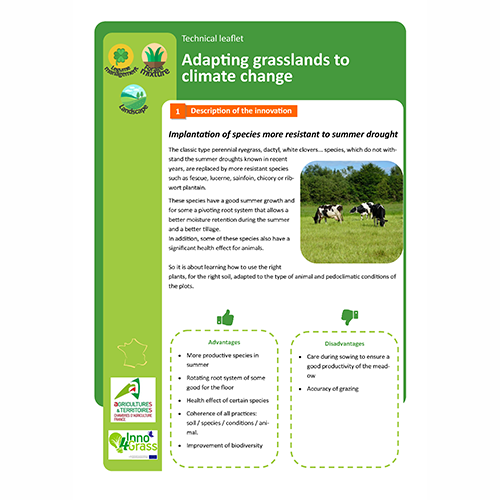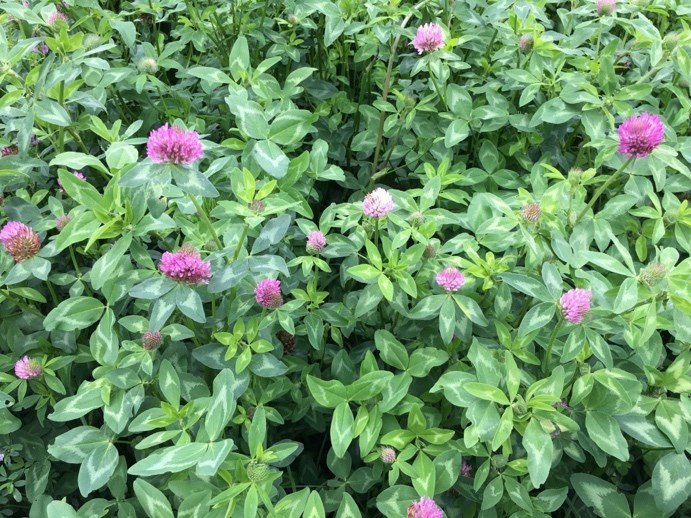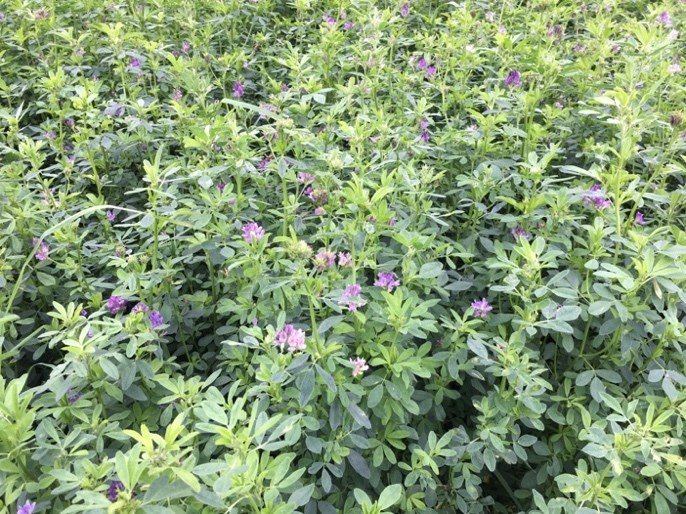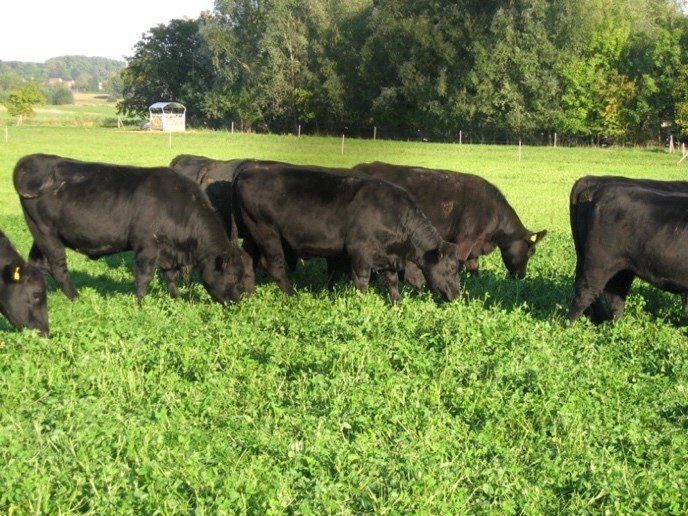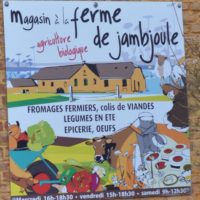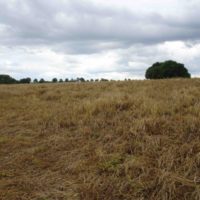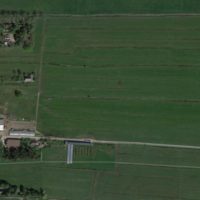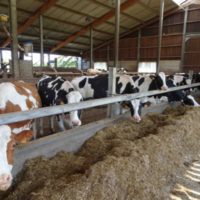Extension of the grazing period in autumn in integrated arable crop-livestock systems
Description
This leaflet on the extension of the grazing period in systems combining arable crops and live-stock is a part of a set of three leaflets, the first dealing with possible techniques in the spring, the second those of the summer and the third those of autumn. Each leaflet can be read separately.
General context
Milk price has fluctuated a lot in recent years with, in addition, a downward trend. Beef meat price is also changing negatively. Therefore, reducing production costs becomes imperative to ensure the profitability of livestock systems. Grazed grass is the most ‘natural’ feed for domestic herbivores, and it is also the cheapest feed. Extending the grazing season is therefore an effective strategy for reducing production costs. A well-managed and prolonged grazing in late winter-early spring and autumn also saves la-bour because the time spent on feeding animals and cleaning buildings is reduced. The saved time can be spent on leisure activities or on income-generating activities such as processing and marketing of products.
The climate crisis and its increasing summer droughts complicate the achievement of these objectives because they reduce grass production at this time of the year, espe-cially that of permanent grasslands. It should therefore be possible to use new, more drought resistant mixtures, to ensure the continuity of grazing at this time of the year.
Grass-based dairy and meat products stand out from those produced on the basis of green maize and human foods (soybean, cereals). They have better nutritional qualities (lower levels of saturated fatty acids, better omega3/omega6 ratio, higher content of conjugated linoleic acid) and benefit from a more favourable image in the public.
Producing more grass-based milk and meat on mixed farms, combining arable crops and livestock farming, requires a combination of the following measures: a good grass-land management, a complementarity between permanent grasslands and temporary grasslands, and an animal breed able to effectively transform grass into milk and meat.
Description of the innovation
In mixed farms, it is possible to integrate temporary grasslands into the rotation of annual crops. These grasslands are usually sown for periods of one to three years, for example with a mixture of grasses and legumes. These may be alfalfa/grass(es), red clover/grass(es) or more complex mixtures of several legumes and grasses.
Examples of mixtures:
- Alfalfa (20 kg/ha) – Cocksfoot (15 kg/ha) or cocksfoot (10 kg/ha) and tall fescue (5 kg/ha). Duration: 2 to 3 years or more.
- Diploid red clover (8 kg/ha) – Cocksfoot (15 kg/ha) or cocksfoot (10 kg/ha) and tall fescue (5 kg/ha). Duration: 1 to 2 years maximum with cultivars of the ‘Ackerklee’ type of red clover, 1 to 3 years maximum with cultivars of the ‘Mattenklee’ type of red clover.
The choice of cocksfoot and tall fescue is preferred because both species are drought resistant, which is favourable to summer growth. Diploid red clover cultivars are preferred because they are easier to dry than tetraploids.
Red clover or alfalfa and grass-based temporary grasslands continue growing much longer than permanent grasslands in the autumn. For example, if permanent grass-land growth stops around mid-October, temporary grassland growth can continue through late December – early January. This saves two and a half to three months of grazing. The soils are often sensitive to compaction at this time of the year, the pas-sage of the animals must thus be fast so as not to damage soil structure and sward quality.
Instantaneous stocking rate must be important for quickly gathering forage and moving animals to the next surface. Stocking is organized by moving a front electric wire, twice a day or every day. Permanent fences are not necessary. Stocking rate is adapted to soil condition and the amount of available green forage. The organization of the passage of animals in plots must respect the principles of rotational stocking. It is a good idea to give animals access to a rack filled with straw or low-quality hay so that they can regulate the water and protein content of the ingested feed.
Cuts are harvested on these grasslands for stocking winter forage for the rest of the year, except possibly in early spring (see leaflet on extension of the grazing period in spring).
Results obtained with the adoption of the innovation
In regions where the housing period is approximately six months, reducing this peri-od from two and a half to three months corresponds to a reduction of about 50% of the winter feed ration. This significantly reduces the costs of concentrated feed and forage crops.
Animal health is also improved because they do exercise.
This innovation is well adapted to the Atlantic or continental climates of North-West Europe. In hyper-Atlantic climates (Ireland or Brittany, for example), where grass growth almost never stops, this system is less attractive although it is useful too. In climates with long, very cold winters (mountain areas, Scandinavia and Eastern Eu-rope), the end of growth difference between temporary and permanent grassland is reduced, which decreases the interest of the technique.
This system is particularly suitable for farms integrating annual crops and livestock. It can be adapted to a 100% grass-based system provided that temporary grasslands are sown.
Advantages
- lower feeding costs
- less manpower for animal feeding and building cleaning
- improved animal welfare
- better product quality
Disadvantages
- It requires the daily movement of the electric wire which must sometimes be done by rainy and windy weather
- In the case of dairy cows, animals must also be brought back every day to the barn for milking
- Compared to a maize silage and concentrated feed ration, stocking requires more flexibility, observation and thought
More information
- Thomet P., et al., 1999. La pâture continue sur gazon court, fiche technique ADCF Ib 8.2.2
- http://www.fourragesmieux.be/Documents_telechargeables/Le_paturage_des_prairies_permanentes_Cremer_2015.pdf
Additional information
| Domains of innovation | animal feeding management, farm system, forage mixture, grazing management system, legume management – Annual legumes, legume management – Perennial legumes |
|---|---|
| Main types of animal | beef cattle, dairy cattle, dairy goats, dairy sheep, meat sheep |
| Country | Belgium |
| Product type | Technical leaflet |
| Language | English, French |
